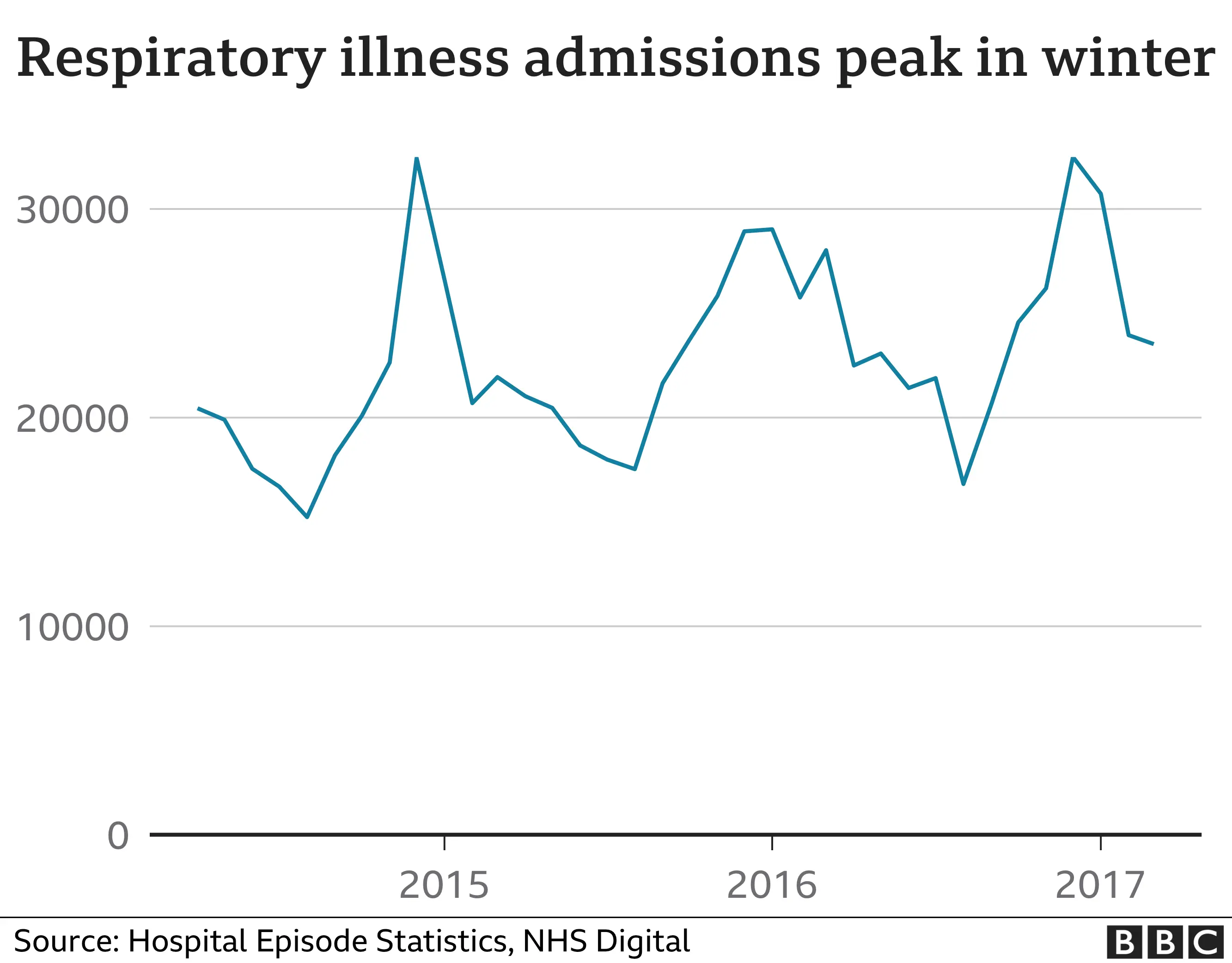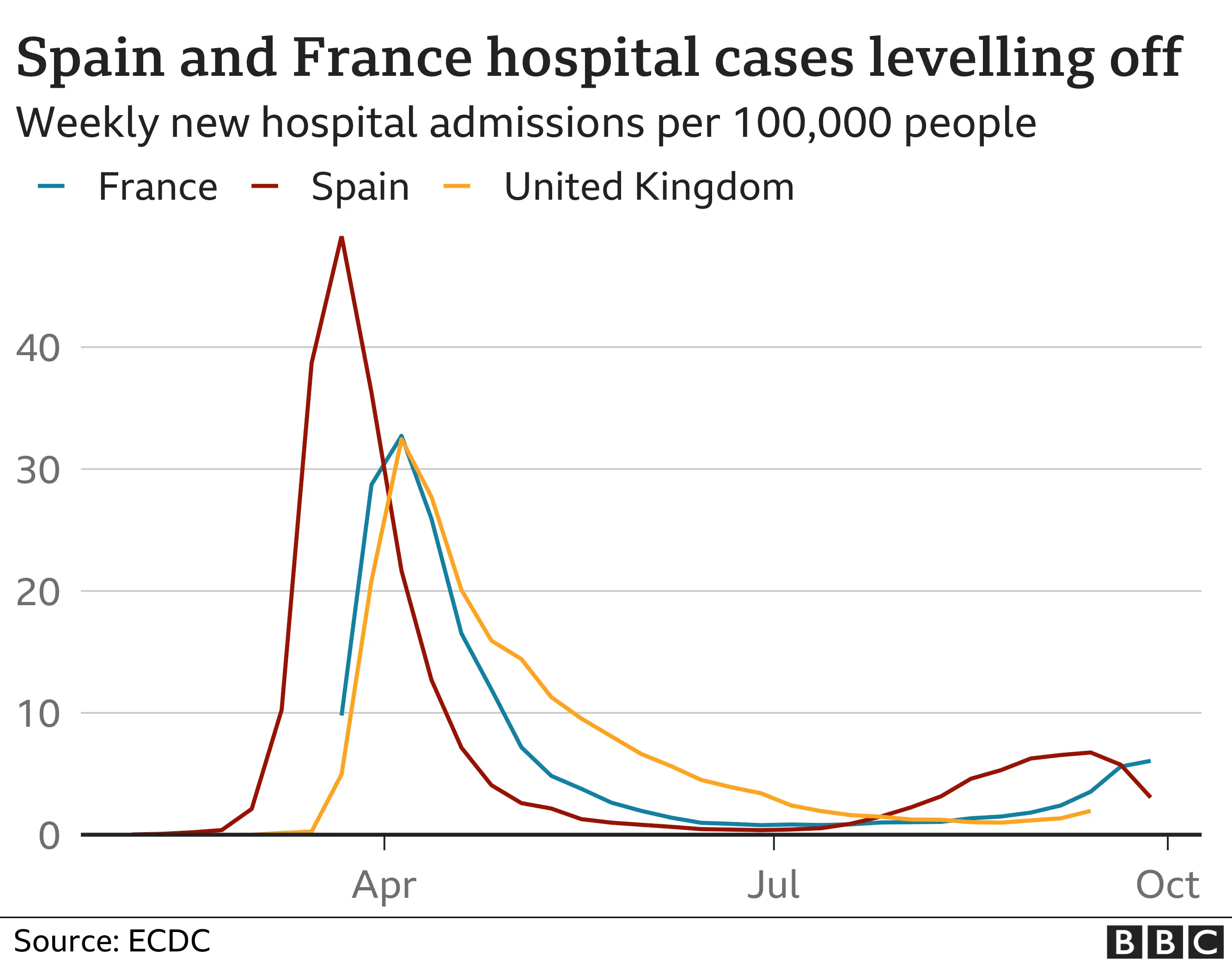Covid: What is the risk of the NHS being overwhelmed?

 Getty Images
Getty ImagesHospitals in England have seen the number of new admissions jump by a quarter in just one day.
During the spring, the threat of the NHS being overwhelmed was one of the prime reasons the UK went into lockdown. So how well-prepared is the health service for the second wave?
Hospital cases are still low
The rise in infections in the community is now clearly translating into new cases being admitted to hospital.
But we are still a long way from the peak.


The increase in admissions means there are now nearly 3,000 patients in hospital with Covid.
That represents about 3% of hospital beds.
But given the reduced amount of activity - latest figures suggest only about half the number of routine operations are being done than was the case before the pandemic - there is still plenty of available space.
The latest occupancy figures suggest there were around 30,000 beds unoccupied across the UK in the summer - three times as many as was normally the case before the pandemic hit.
The pressures are not being felt evenly
As with cases, the highest rates of admission are in the north of England. A look at the most recent data for hospital admissions shows two-thirds of the new cases admitted in England have been in the North East, North West and Yorkshire and Humber.


Hospitals in these areas have started standing up more of their "Covid wards" - where patients are isolated so they do not come into contact with patients coming in for other reasons, from cancer care to routine operations.
But there have already been cases of hospitals reporting a build-up of extreme pressures.
In recent weeks, hospitals in Bolton, Blackburn and Wakefield have issued alerts and tweets urging patients not to come to hospital unless absolutely necessary.
Hospitals always get busier in winter
But none of this is exceptional at this time of year - especially the closer we get to winter.
Admissions for respiratory illnesses can double from late summer to the peak in December and January.


What is not clear from the figures published by the government and NHS on Covid is what impact is being felt on other respiratory illnesses, such as flu.
Prof Carl Heneghan, director of the Centre for Evidence-based Medicine at Oxford University, said this "context" is going to be crucial if decision-makers and the public are not to jump to "inappropriate conclusions" from rising Covid admissions.
At the height of winter, hospitals would expect to see around 1,000 emergency admissions a day for respiratory illnesses.
But are staff ready to cope?
However, what may be more of a problem this year compared with previous winters is the state of the workforce.
Both NHS managers and unions have warned that staff are on their knees after six months of fighting the pandemic following one of the most difficult winters in a generation.
This week NHS Providers chief executive Chris Hopson warned that staff were "exhausted" and "traumatised" by what had happened this year.
 PA Media
PA MediaDuring the peak, staff found themselves being redeployed to unfamiliar environments as the NHS pulled out all the stops to ensure the service was not overwhelmed.
This time it will be different. Hospitals are planning to keep other services running on a much greater scale than they did in the spring when routine treatments were cancelled en masse.
London-based intensive care consultant Rupert Pearse said hospitals were working on the basis that hospital cases would peak at about two-thirds of the level they did in the spring.
He believes that will allow just enough room to "keep many services going".
What happens next will be key
Much though will depend on what happens next. On the current trajectory, hospital admissions are doubling every week to two weeks - the rate of increase is even steeper in the hotspot areas.
If that continues, the NHS will fairly quickly reach and exceed the peak seen in the spring.
That would then require the network of Nightingale field hospitals to start taking on patients, stretching resources even further.
But the NHS is still a long way from that position.
And the experience of other nations offers some hope that the situation may not be repeated.


Spain and France, which started experiencing a rise in cases before the UK, have seen rises in hospital cases slow in recent weeks.
Although some would point out that that required extra restrictions to be brought in to be achieved.
There is also some evidence from the southern hemisphere - from countries such as Chile, Argentina and Australia - that suggests other respiratory viruses may be pushed out.
In particular, they have reported very little flu - something which experts have put down to the social distancing and good hand hygiene that have become routine.
It has left the NHS planning for the worst, but hoping for the best.
Follow Nick on Twitter
